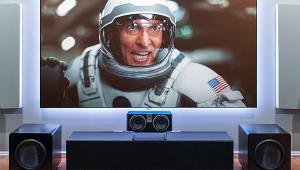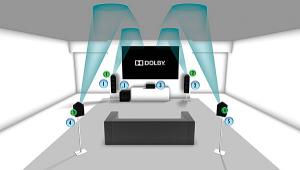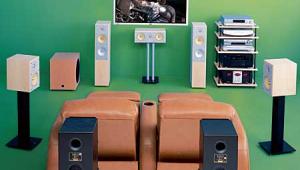HT Boot Camp: The Agony and the Ecstasy
Oh for the simplicity of days of yore, when a home-entertainment system came entombed in a massive slab of French Provincial furniture, with the television tube in the middle and built-in loudspeakers flanking it on either side. There was little decision-making as to speaker placement, usually boiling down to which wall of the living room was equipped with the twin-lead connection to the aerial on the roof. With this simplicity and lack of flexibility, there was little one could do wrong (or right, for that matter) in terms of speaker placement.
Modern home theater systems have an unprecedented level of complexity and flexibility. Unfortunately, there are many decisions to make regarding speaker placement and much that can be done wrong. Fortunately, there are simple techniques that can be used to ensure that your speakers are optimally placed.
First, determine what trade-offs you're willing to make between ultimate performance and practicality. Do the speakers need to be hidden in a cabinet, or can they be freestanding and visible? Will aesthetic concerns over wires and speaker stands be an issue? Are there small children or large dogs the speakers need to be protected from (or vice versa)? Do you live in a seismically active region where safety from falling objects is a concern? All of these issues (and more) come in to play when determining the placement of speakers. Even if you don't have the leeway to provide your speakers with perfect placement, measures can be taken to make the best of your situation.
Next, get to know your speakers. Different speaker designs are optimized for different placement. Most manufacturers will provide you with general placement suggestions in the speaker's user manual.
The vast majority of speakers on the market are classified as direct-radiating or monopole in design. This means that sound is emitted in one direction. If your speakers are comprised of boxes with drive units on one side, they're almost certainly monopoles. Within this category, the most common speakers are passive (requiring an external source of amplification) and have a crossover to a subwoofer in the 70-hertz to 90-Hz region. I'll focus on speakers of this type, but many of the suggestions offered here will apply to other types of speakers, as well.

In a perfect world, most speakers in this category will perform best when mounted at least 3 to 4 feet away from room boundaries (walls, floor, or ceiling) and other reflective objects, at ear height when seated in the main listening position (the tweeter is generally placed 36 to 40 inches above the floor), and aimed toward the main listening position. The spacing between the left and right main speakers will vary with distance to the listening position, screen size, room width, and personal taste. In most rooms, a spacing of 6 to 10 feet works well, but don't be afraid to experiment. This positioning generally provides for the most natural tonal balance and focused three-dimensional imaging.
An often-used rule of thumb to determine how far from the front wall to place the speakers and the listening position is the rule of thirds. If possible, your speakers should be at one-third the length of the room and the listening position at two-thirds the length of the room. If this isn't feasible, the next best option is the rule of fifths. Place your speakers and listening position at multiples of one-fifth the length of the room. Do not make the distance from the speaker to the wall behind it and the distance from the speaker to the wall beside it equal.
The front speakers should all be at the same height and arranged in an arc so that they are all the same distance from the listening position. The rear speakers should also be at the same height as (or higher than) the front speakers and equidistant from the listening position. The distance from the listener to the front speakers and the distance from the listener to the rear speakers need not be the same, however, because of the adjustable time delay incorporated into surround processors. Typically, the subwoofer should be located in one of the front corners of the room (there are many exceptions to this rule, which we'll discuss later).













































